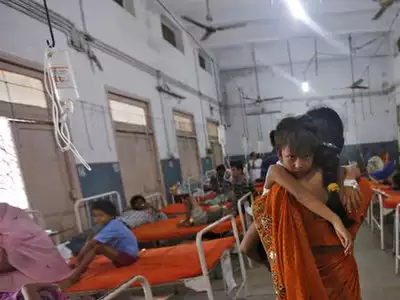Health Problems in Children Up to 5 Years Due to Financial Challenges in Poor Families
The formative years of a child, especially from birth to age five, are crucial for their physical, emotional, and intellectual growth. However, financial instability significantly impacts this development in both developed and developing countries. In countries like India and the USA, poverty brings unique challenges that put millions of young children at dire risk.
Table of Contents
How Poverty Affects Children’s Health and Development
Poverty creates an environment that can jeopardize every aspect of a child’s growth. From poor nutrition to emotional stress, the effects are often long-lasting. In both India and the USA, families grappling with financial instability frequently struggle to meet their children’s basic needs.

Malnutrition: A Widespread Concern in India
In India, malnutrition continues to be a leading issue among impoverished children. A significant number of kids under 5 years old suffer from stunted growth and developmental delays due to inadequate access to nutritious food. This is often a direct result of living in poverty-stricken households. Malnutrition affects over 40% of children in India, according to studies highlighted by the New Delhi government’s health programs.
Furthermore, communities with limited financial resources often lack access to clean drinking water and proper sanitation, further exacerbating health challenges. Waterborne diseases like diarrhea and cholera are common in these areas, compounding malnutrition-related issues.
Food Insecurity and Obesity Among Poor Families in the USA
In contrast to India’s undernourishment epidemic, American children from low-income families often face a double-edged sword: food deserts and unhealthy diets. Processed, calorie-dense foods made affordable through government food assistance programs can lead to childhood obesity, which is linked to lifelong health problems such as diabetes and heart disease. Learn more about the link between poverty and health in the U.S. through this insightful Pediatrics Journal research.
Emotional and Psychological Impact

The stress of financial instability doesn’t just impact children physically; it takes a toll on their mental health as well.
Early Brain Development and Stress in Both Nations
In their critical early years, children rely on consistent emotional support and stimulation for brain development. Chronic economic struggles, however, create instability within families. In the United States, research has found that income volatility hurts children’s emotional well-being, contributing to delays in cognitive abilities and behavioral problems (source).
Similarly, in India, many families face heightened stress due to a lack of access to affordable medical care or government support. Poor mothers, in particular, often face mental distress, which directly affects how they care for their children. According to this BMJ Pediatrics study, poverty significantly hampers children’s potential to meet developmental milestones.
Emotional Tradeoffs in Low-Income Families
Parents often make agonizing decisions, such as whether to pay for housing or healthcare, which leaves children vulnerable. A report by the Economic Policy Institute highlights that financial constraints force families to sacrifice quality childcare, which impacts a child’s stability and growth.
Healthcare Gaps: A Global Divide
Limited access to healthcare is another substantial barrier.
India’s Lack of Accessible Pediatric Care
In India, many rural areas lack adequate pediatric healthcare facilities. Children in these regions often don’t receive essential vaccinations, increasing their risk of preventable diseases. The National Family Health Survey revealed alarming disparities in healthcare access, with underprivileged communities suffering the worst.
Rising Costs and Limited Support in the USA
On the other hand, in the USA, while Medicaid and CHIP (Children’s Health Insurance Program) provide a safety net for low-income families, gaps remain. Many families find it hard to afford specialized care or prescriptions. This problem is worsened by the high cost of childcare, which often eats into budgets for medical needs.
Addressing the Challenges

Poverty is a complex problem, but there are ways to mitigate its impact on children:
- Government interventions in India: Programs such as the Integrated Child Development Services (ICDS) aim to address malnutrition.
- Community-based solutions in the USA: Local food banks and health initiatives provide additional resources for struggling families.
- Global partnerships: Both nations can learn from UNICEF’s efforts to combat childhood poverty worldwide.
Organizations such as Outreach International are actively working to offer long-term solutions by empowering communities to break out of the poverty cycle.
Conclusion
Poverty is a shared challenge across continents, but it manifests differently in India and the USA. Both nations must prioritize the health and development of their youngest citizens by improving healthcare access and reducing the financial burdens on low-income families. Early intervention is key—because no child should suffer due to circumstances beyond their control.












